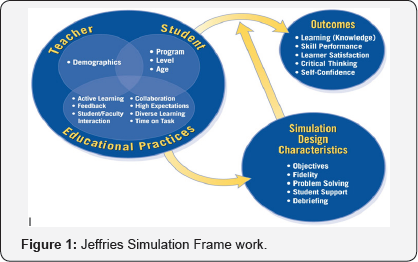A Simulated Case Scenario to Demonstrate Effective Pain Assessment
Nahar AlReshidi1* and Angela Darvill2
1University of Salford, UK
2University of Huddersfield, UK
Submission: March 14, 2017; Published: May 05, 2017
*Corresponding author: Nahar AlReshidi, Tony Long, Amanda Miller, University of Salford, UK, Email: n.m.alreshidi2@edu.salford.ac.uk
How to cite this article: Nahar A, Angela D. A Simulated Case Scenario to Demonstrate Effective Pain Assessment. JOJ Nurse Health Care. 2017; 2(3): 555561. DOI: 10.19080/JOJNHC.2017.02.555561. DOI: 10.19080/JOJNHC.2017.01.555561
Introduction
This paper describes the development of a simulated case scenario as part of the development of an educational package. The package has been developed as part of a PhD study to test the impact of implementing an interactive postoperative pain management education programme on pediatric nurses knowledge and attitudes, beliefs and perceptions of children's pain, self-efficacy, and perceptions of barriers to optimal practice.
The overall goal of the scenario was to perform effective pain assessment and management in a 9 years old child. The objectives were to communicate effectively with the child in pain, to identify key steps of pain assessment, to Identify subjective and objective data to collect and analyse when assessing pain, select age appropriate pain assessment tools and identify the standardised tools used to assess pain, to perform and evaluate appropriate pain management according to the RCN guidelines[1] “the recognition and assessment of acute pain in children”,[2] “ Standards for assessing , measuring and monitoring vital signs in infants, children and young people”.
Only one study used technology and new strategies such as building a case scenario in building their education programmes of the previous studies and rest did not, which open the doors for this study to test the using of scenarios on the acquired knowledge.
Methods
Holland et al. [3] suggest that designing a simulated scenario equates to that of a classroom lesson plan, in which learning outcomes are essential.
The overall goal of the simulated scenario was to demonstrate effective pain assessment and management in a 9 years old child with reference to the RCN guidelines on pain management [1]. These highlight that if a scenario is well-written it will present the learner with numerous opportunities to practice technical and non-technical skills. The simulated scenario for the educational package was created using the SimJunior® human patient simulator.
Scenario
Yasser is a 9 years old child admitted to the children's surgical unit; he had an appendicectomy earlier today, under general anaesthetic and he was initially in pain. At the recovery room he received 25mg Pethidine I.V bolus dose according to the guideline. At the moments has been experiencing more pain mainly on the left side of his abdomen. He is grimacing and clutching his abdomen.
Scenario specific details
Initial handover given to candidates
- S(Situation): Yasser is admitted to the children's surgical unit following an appendicectomy , he had general anaesthesia. At the moments he has been crying and clutching his abdomen.
- B(Background): has appendicectomy early today And initially he was not complaining of pain. His Wight = 25 kg. Patients received 25 mg Pethidine I.V bolus dose in recovery room and the Surgeon wrote a PRN stat order another 25 mg Pethidine I.V when patient feels in pain 3 hourly. Patient has cannula on his right arm from the recovery room.
- A(Assessment): he is grimacing, respiratory rate increased, his arm over his abdomen, Increased heart rate.
- R(Recommendation): Assess type of pain, duration, location and history. Assess whether he took any type of pain medications or has received any type of pain relieving methods. Check if there is any PRN order to relieve patient pain. Notify the doctor if required Figure 1.

Conclusion
Only one study was found to use technology in a related educational package [4], and using a simulated case scenario in a learning package was considered an innovative way to demonstrate effective pain assessment and management.
References
- Royal College of Nursing (2009) The recognition and assessment of acute pain in children. Clinical Practice Guidelines.
- RCN (2013) Standards for assessing, measuring and monitoring vital signs in infants, children and young people.
- Holland C, Sadler C, Nunn (2008) Scenario design: theory to delivery. In: R Riley (Ed.), Manual of simulation in healthcare. pp. 139-148.
- Vincent CVH, Wilkie DJ, Wang E (2010) Pediatric nurses beliefs and pain management practices: An intervention pilot. West J Nurs 33(6): 825-845.






























